Environment
405 articles

The different types of deserts include sand, rock, salt, polar, cold and many more. Some of us may not be aware there are so many different types of deserts. This is partly due to the often misunderstood definition of what is a desert. A desert is an ecosystem characterized by low rainfall and limited...

Birds, fascinating creatures that grace the skies and inhabit various corners of the world, captivate us with their diversity, behaviors, and unique adaptations. As denizens of the air, land, and water, birds have evolved to thrive in diverse environments, leading to a rich array of classifications based...

The exposome is a concept that refers to the cumulative environmental factors to which an individual person is exposed throughout their lifetime. This refers to the time period between birth and death. While it is helpful to understand the negative environmental factors which can harm the human organism,...

Microorganisms are microscopic living beings imperceptible to the eye that are found everywhere. We can find them in the soil, at the bottom of the ocean and even in the human intestine. We often associate microbes with harmful organisms such as pathogens. These are microorganisms which cause disease...

Mitochondria are one of the most important organelles of most eukaryotic cells. Within each mitochondrion, important processes are carried out in which different proteins, molecules, channels and membranes are involved. The functions of mitochondria are so advanced, it has been postulated that these organelles...

Chloroplasts are remarkable organelles found in the cells of photosynthesizing organisms, playing a pivotal role in the process of photosynthesis. They are responsible for capturing light energy from the sun and converting it into chemical energy, fueling the growth and survival of plants, algae, and some...
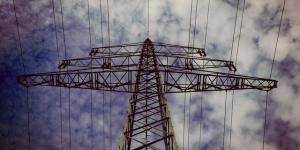
Electromagnetic pollution is type of pollution that is caused by electromagnetic activity. Considered a type of electrosmog, it electromagnetic radiation that has negative consequences on the environment. This includes the people, animals and ecosystems within it. Although electromagnetic radiation is normal...

A sandstorm is a weather phenomenon that occurs when the wind blows large amounts of sand or dust into the air. It is for this reason they are also known as dust storms. They create a dense cloud of earth that darkens the sky and significantly reduces visibility. These storms generally occur in desert...

Soil formation takes a long time and is generated in a process which results in layers of varying composition, consistency, texture and color. These layers are known as the different soil horizons. When we look at how these different soil horizon layers are arranged, we can see what is known as the soil...

As cities continue to grow and develop, an increasing concern arises: the rising temperatures in urban areas. The heat island effect refers to the phenomenon where urbanized regions experience significantly higher temperatures compared to their surrounding rural areas. By understanding the heat island...

In the intricate tapestry of ecosystems, biotic factors play a crucial role in shaping the dynamics of life. An ecosystem comprises a delicate balance of both biotic and abiotic factors, with biotic factors representing the living organisms and the intricate relationships they form. When we think of biotic...

The difference between unicellular and multicellular organisms is the number of cells which make up the organism. Unicellular organisms have only one cell, whereas multicellular organisms have multiple cells. While this is the most stark comparison, the differences between unicellular and multicellular...

Sea waters, also known as ocean waters, encompass the vast bodies of saltwater found on Earth. They are a significant component of the hydrosphere, comprising about 97% of the planet's water. The distribution of ocean waters is extensive, covering approximately 70.8% of the Earth's surface. These expansive...
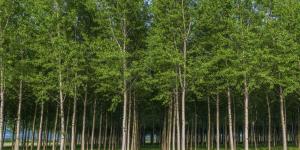
Artificial forests, also referred to as cultivated or planted forests, are created by human intervention and serve specific purposes such as timber production, biodiversity conservation, or carbon sequestration. Unlike natural forests that evolve and develop spontaneously, artificial forests are meticulously...

In the botanical world, the concept of whorls unveils a captivating pattern of arrangement found in plants. Whorls refer to the concentric groupings of leaves, branches, or flowers that emerge from the same level or node along the plant's stem. These remarkable formations not only contribute to the structural...

Saprophytes, also known as saprotrophs, are a fascinating group of organisms that play a vital role in the natural processes of decomposition and nutrient recycling. By understanding the role of saprophytes and appreciating their ecological contributions, we can gain a deeper appreciation for the intricate...

Pollinators are animals that pollinate plants thanks to their natural behavior. Often this is in the form of feeding on plants and carrying pollen from one flower to the next one. Other animals can pollinate simply by walking past plants and carrying pollen on their coats. The fertilization of flowers...

Chromosomes are molecules which contain genetic information. All human beings are unique thanks to a unique genetic code which creates the building blocks for our bodies. These traits are inherited from our parents due to reproduction. Although there are many types of reproduction, all living organisms pass...

Amblypygi is an order of arachnid arthropods that are commonly known as whip spiders or tailless whip scorpions. These common names imply they are either types of scorpion or types of spider. Perhaps confusingly, they are neither. Whip spiders are a different type of arachnid, despite certain similarities...

We may think of blood-sucking animals as the stuff of legends, but there are animals that feed on blood to survive. This process is known a hematophagy and it is likely more common than you think. It is not a method of feeding reserved exclusively for vampire bats, but is found in other mammals, fish,...
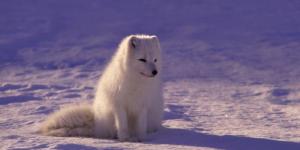
The polar environment is one of the most fascinating and challenging regions on Earth. It's a place of extremes, where the temperature can drop to -50°C or lower, and the sun doesn't rise or set for months at a time. Despite the harsh conditions, the polar regions are home to a unique and diverse range...

The enchanting rise and fall of ocean waves has always stirred our imagination. But behind their serene beauty lies a powerful force of nature that shapes and reshapes the intricate contours of our coasts. This force is known as coastal or marine erosion, a fascinating geological process that shapes the...

A heat wave can be generally defined as a period of prolonged hot weather which is excessive for a given climate. They are among some of the most devastating weather events, especially because their nature means they occur over a prolonged period of time. A consensus agreement has not yet been reached...

Forest fires pose a significant threat to natural territories in many countries, particularly during the warm months. The scale of destruction caused by these fires can be catastrophic, as witnessed in various regions such as the Amazon and Australia. While the commendable efforts of emergency teams and...
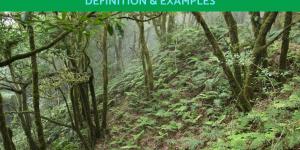
Also known as laurisilva, laurel forests are subtropical forests known for high humidity and broadleaf tree species. While their name comes from the trees which constitute the Lauraceae family of plants, not all laurel forests will contain laurel trees. However, the trees which inhabit laurel forests...
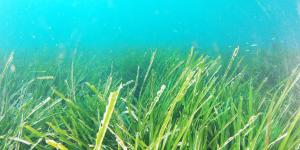
Beneath the captivating surface of our oceans lies a world of astonishing beauty and ecological significance. Among the remarkable ecosystems that flourish in this aquatic realm, seagrass beds stand as a true testament to the wonders of nature. However, these lush underwater meadows often go unnoticed,...

The main difference between angiosperms and gymnosperms is related to their ability to flower. Although they share many similarities, their differences are vitally important to their ecosystems. Not all types of plant can grow in the same ecosystem, with gymnosperms and angiosperms better adapted to...
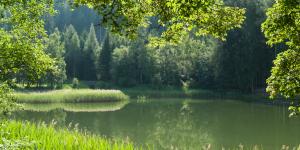
Gallery forests, also known as riparian forests, are unique and vital ecosystems that occur along the banks of rivers and streams in arid or semi-arid regions. These forests are characterized by their linear shape, often appearing as a ribbon of trees winding through the surrounding landscape. Gallery...

Also known as second-growth forests, secondary forests are forests regenerated from disturbances of mainly anthropic causes, but natural causes are a factor. They host a great biodiversity, from various sizes of trees and plants, as well as carnivorous mammals, birds, insects and various animal species....

Evolution is the process by which living organisms change and adapt over time in response to their environment, leading to the diversity of life that we see on Earth today. Divergent evolution is a type of evolution that describes how related species become more different over time due to different...

The Kingdom Fungi is one of the five kingdoms of all living things, although this will depend on where you study. Some believe there are as many as six kingdoms, others as little as three. The reason why we group organisms into kingdoms is to better understand them. Taxonomic categorization helps us...

Also known as old-growth forests, primary forests are those which are made up of native tree species which have had a minimal amount of human intervention. With such little interference in their growth and development, primary forests are those which have ecological processes which have remained largely...

Have you ever wondered if plants can move? While they may not have legs or wings like animals, plants have their own unique ways of moving and responding to their environment. Plant movements have fascinated scientists for centuries and play a critical role in the survival and reproduction of plants. Although...

An ecoregion is an area of the planet which is defined by both its ecology and geography in terms of natural ecosystems and size. Earth is rich in biodiversity, but different parts of Earth have very different ecological characteristics. How we understand such biodiversity requires categorization. Doing...

The striking red mineral known as cinnabar has fascinated people for centuries with its unique properties and versatile applications. It has been used for everything from pigment in art to medicine and industrial processes. Although it is highly prized for its bright color, the use of cinnabar also carries...

Biosecurity is the preventive measures various organizations take to prevent the spread of harmful organisms and ensure the health of an ecosystem. It is of vital importance to the health and wellbeing of all countries around the world, helping to prevent the spread of infectious agents that cause disease....

The Monodontidae, also known as the family of narwhals and belugas, is a group of Arctic and subarctic cetaceans known for their distinctive physical and behavioral characteristics. These marine mammals are known for their unique characteristics, such as their tusk (in the case of narwhals), their white...

Forests and jungles are two of the most beautiful and fascinating natural environments on our planet. Both are filled with an abundance of life, from towering trees to exotic animals, making them some of the most fascinating ecosystems to study. Although forests and jungles share some similarities, they...

Although they are one of the structures most associated with the type of organism, not all plants have leaves. Most do and many have leaves which may not look like it. For example, a blade of grass is a type of leaf. Even mosses have leaves, although they have a much more simple structure and are not...

The difference between mitosis and meiosis in cell division is to do with the type of cell which is created by each process. Both are important in genetics as they allow for the functioning of various vital processes in cells, ensuring the organism of which they are a part survives. We can say that mitosis...

Hornworts are a group of non-vascular land plants which are poorly understood, despite growing in various habitats across the world. There is some debate over their scientific categorization, but there are certain characteristics of hornworts which all species have. These characteristics relate to their...

There are hundreds of thousands of individual species in the plant kingdom. Categorization of these plants is an ongoing process which can be difficult to determine, especially since new plants are discovered almost every day. For this reason, we often use broader categories and taxonomic groups to help...

Sporulation is a type of asexual reproduction which is most associated with fungi, but it can also occur in bacterial organisms. Different organisms reproduce in different ways. Although they can be grouped as either sexual or asexual, within these two broad categorizations are various subcategories which allow...

Fungi are a diverse group of organisms that belong to the fungal kingdom. They are eukaryotic and heterotrophic, meaning that they do not produce their own food but obtain it from other sources. Unlike plants, fungi do not have chlorophyll and cannot photosynthesize. Fungi can take many different forms, from...

In biology, cells are microscopic functional units which allow organisms to carry out their various vital processes. Within each cell are different organelles, the constituent parts which allow the cells to carry out these overall functions. One of the most important organelles of most eukaryotic cells is something...

A thorn forest, also known as a thorn scrub or thorn forest, is a biome characterized by the presence of trees and shrubs with sharp, pointed thorns or spines. This habitat is found in regions with arid or semi-arid climates, typically in areas with low rainfall and high temperatures. Thorn forests are...

The perianth is the protective outer layer of a flower that encloses and protects the reproductive organs such as the stamens and pistils. Its functions go beyond protection, as the perianth can also attract pollinators and help identify different plant species. Therefore, understanding the structure and...

Every year, World Water Day is celebrated on 22nd March. This event was established by the United Nations in 1993 to raise awareness about the importance of safe water for world communities. While many of us take access to safe drinking water for granted, this essential resource for life is not available...

Steppes are a type of biome or terrestrial ecosystem. They are characterized by low levels of vegetation, low rainfall and an arid continental climate. Despite their name, steppe biomes are not defined by their altitude. There are steppes at both high and low elevations. They are wide plains which can...

The landscapes of our planet looked very different 50,000 years ago when compared to today. This is due to various factors, including climactic conditions and the absence of human civilizations. For this reason, the plant and animal species that were present during prehistoric times also varied greatly....
